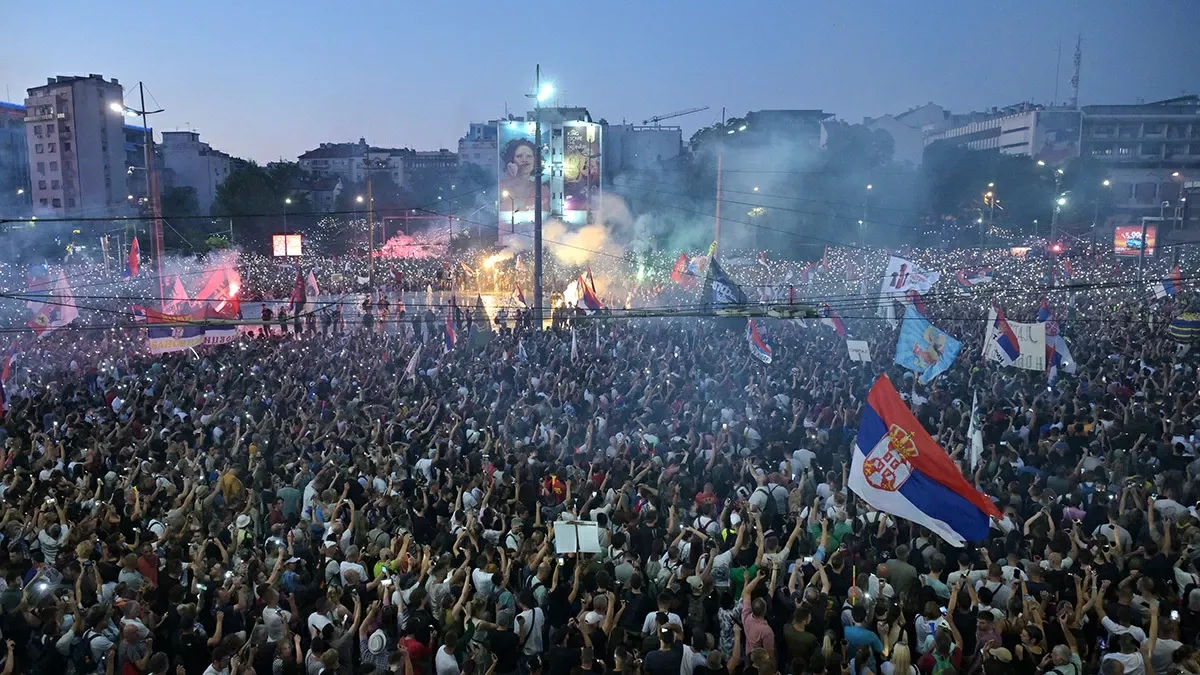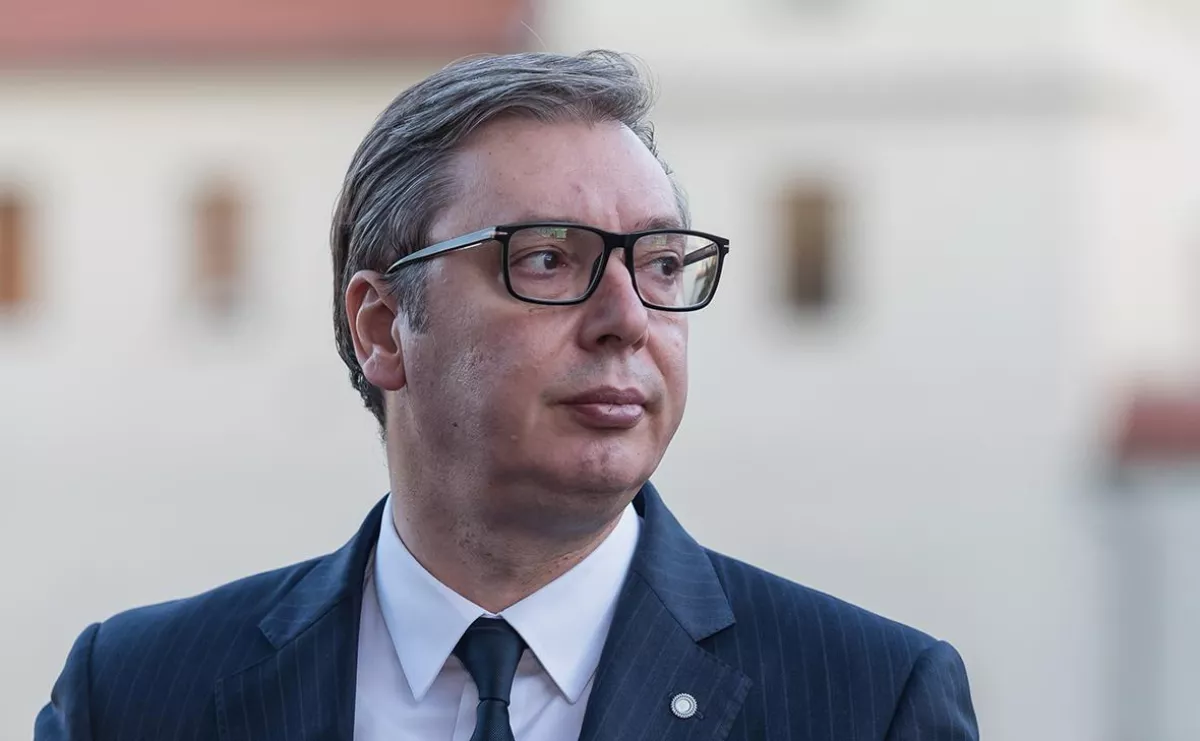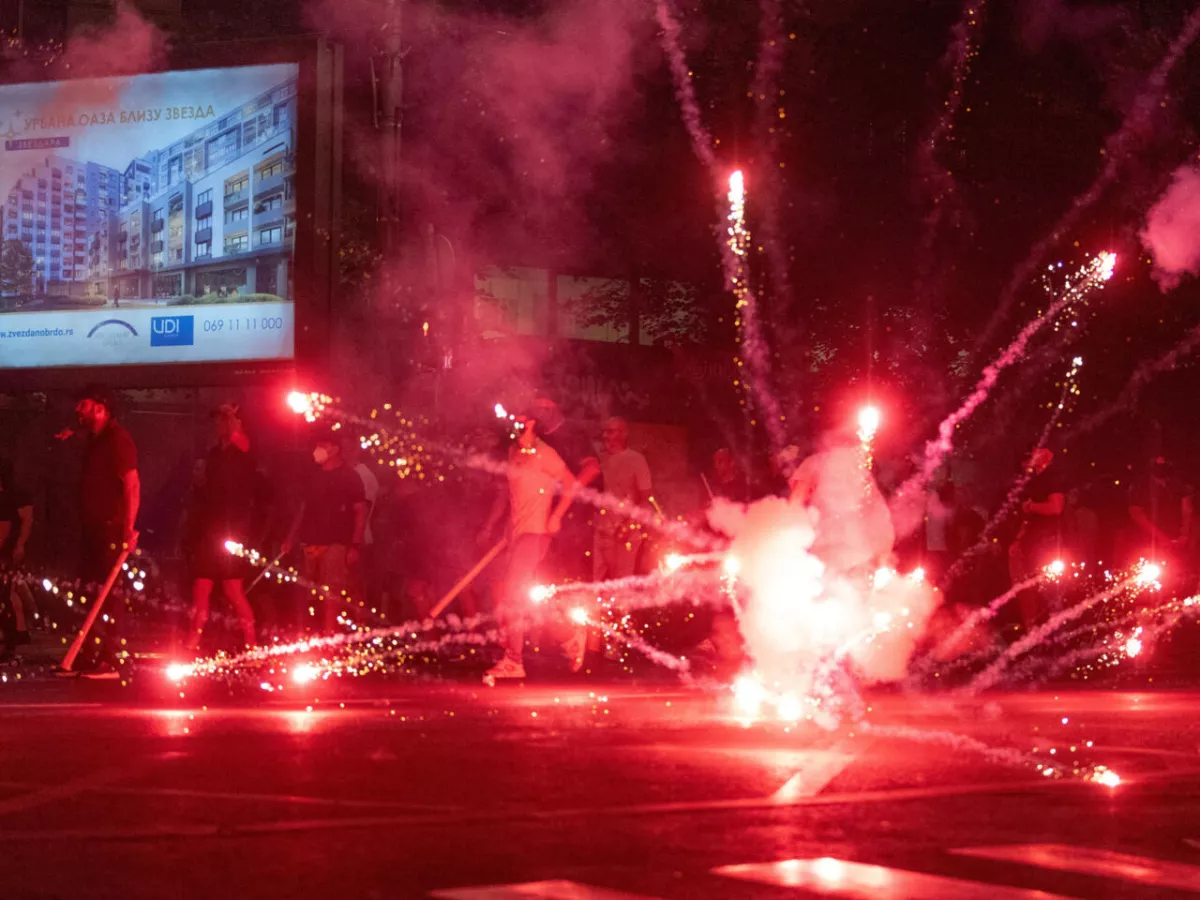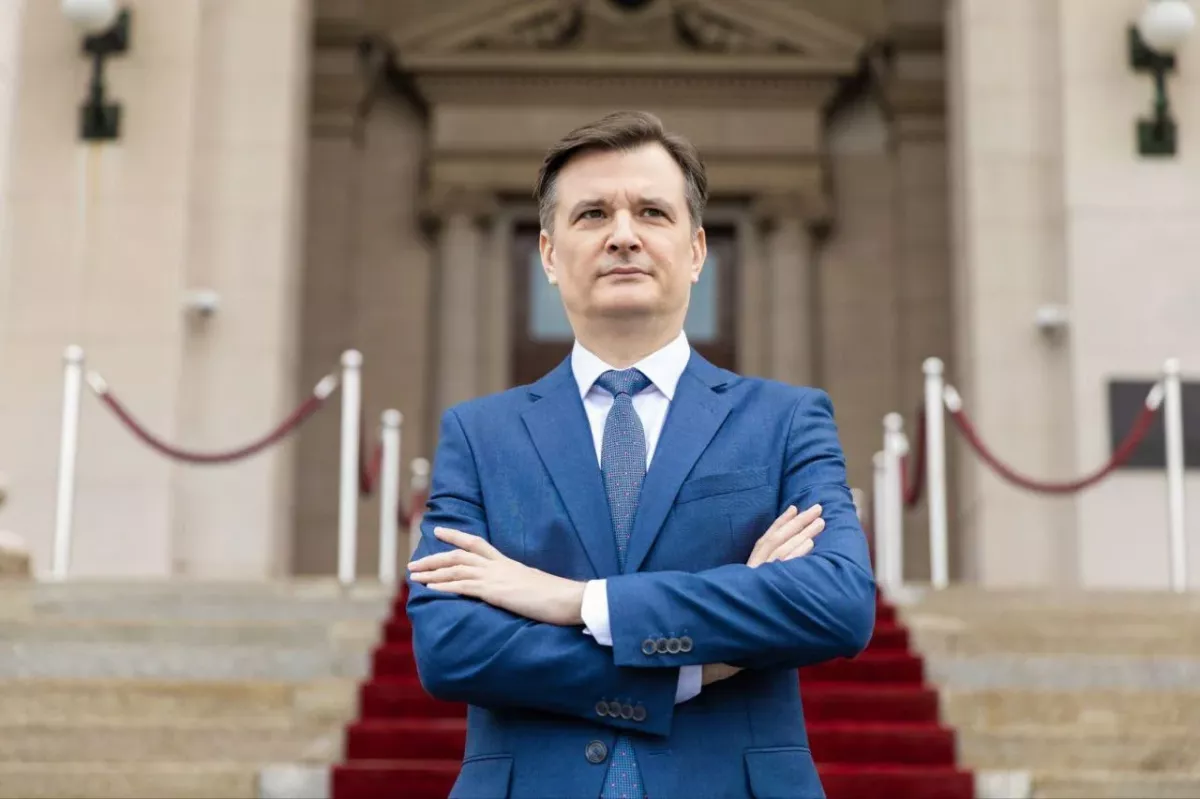Who’s stirring up Serbia: students, fans, or the EU? Analysis
For ten months now, this former Yugoslav republic has been shaken by street unrest. Recently, the protests have become increasingly radical: participants are assaulting opponents, attempting to burn them alive, and vandalising and setting fire to government buildings and offices. What awaits the Serbian people in the near future?
“Popular revolution” – or just another coup?
Unlike other events, what is happening in Serbia today has largely escaped the attention of the global media. Meanwhile, as the confrontation intensifies, many participants in the unrest have already stopped remembering what it all started with. It all began with the collapse of a station canopy in Novi Sad in November 2024, which claimed 16 lives. The minister of construction resigned, followed by the prime minister. The direct perpetrators of the tragedy were also punished. However, civil society declared that the measures taken by the authorities were insufficient. They took people to the streets with the aim of overthrowing the current government, and especially President Aleksandar Vučić. Since then, the intensity of the confrontation has only increased, and recently, the most serious escalation has been observed.

Initially, the protests were largely peaceful—often taking the form of carnival-style gatherings or youthful street “parties.” But soon, following the usual pattern, the organisers turned to violent actions. In recent weeks, the cheerful students have increasingly been replaced by street fighters wielding clubs and wearing masks. Their targets include police officers, offices of the ruling party, and supporters of President Aleksandar Vučić, whom the protesters contemptuously call “čaći.” Opponents, in turn, refer to the protesters as “blockers” because of their efforts to block roads, educational institutions, and other facilities, aiming to inflict economic damage on the authorities.
The new wave of open violence began on August 13. On that day, attacks occurred in Belgrade and Novi Sad on camps of Vučić supporters—mockingly dubbed “čačilends.” In response, the authorities began organising street mobilisations in their own support. The attackers were prepped for violent action and armed with improvised weapons. They beat government supporters with sticks and hurled firecrackers and “flares” (fake flares)—the favourite tools of football fans. Serbian football hooligans, notorious across Europe for their aggressiveness and radicalism, are actively participating in the protests. On the streets, there have also been mob attacks on Vučić supporters, who are beaten and humiliated by groups of assailants.
On August 14 in Novi Sad, the headquarters of the ruling Serbian Progressive Party (SNS) was stormed, pelted with firecrackers, and set on fire. Sixty-four people were injured, including 15 law enforcement officers, five of whom were elite “Cobra” special forces operatives. Four police officers suffered serious injuries. Across the country that day, 47 police officers were reported injured. Thirty-seven active participants in the unrest were arrested, including a Croatian citizen.
“Independent” TV channels broadcast a segment showing a man in a construction helmet with a bloodied mouth telling a journalist that “the situation is terrifying” and that he had seen a man with a gun. “The ‘čaći’ are arming themselves with firearms!” proclaimed media outlets sympathetic to the protests. In reality, it was “Cobra” officer Vladimir Brkušanin who had been forced to fire warning shots into the air to save his colleagues from enraged protesters.
Belgrade was also tense, as radicalised demonstrators gathered near the General Staff building, which was cordoned off by police. Attacks on ruling party offices spread across the country during those days.
“The gang is running wild on the streets…”
Videos from the streets of Serbian cities increasingly resembled war-zone reports: blasts and explosions echoed, rockets and fireworks flew through the air, smoke covered everything, and crowds of agitated people alternated between attacking and fleeing.

President Aleksandar Vučić addressed the nation. He stated that those responsible for attempting to burn people alive would be punished and that several criminal cases had already been opened. He also promised that law enforcement would respond to provocations more quickly and firmly. Yet on August 15, unrest continued in Belgrade, Novi Sad, Niš, and Pančevo. Police deployed special equipment on the streets of Belgrade.
On August 16, the epicentres of the riots were Belgrade and Valjevo. In Valjevo, a crowd set fire to the ruling party’s office and torched the city hall and prosecutor’s office. Police dispersed the participants using armoured vehicles. A total of 137 police officers were injured or wounded.
Vučić once again addressed the nation: “Serbia and its citizens are in great danger: people are not allowed out into the city; Belgrade and Novi Sad are empty. Restaurateurs, hairdressers, and craftsmen cannot work in peace because gangs are running wild on the streets. They believe they have the right to beat, burn, and destroy.” The Serbian president characterised the protesters’ actions as terrorism.
For a time, either Serbian security forces managed to regain control of the situation, or the radicals simply ran out of steam. After all, fighting the police and hurling incendiary objects requires a lot of adrenaline and is exhausting in the long run. Or perhaps the organisers of the unrest decided to change tactics, mixing “pacifism” with street fighting. Whatever the case, the violent clashes were replaced by non-violent demonstrations. On September 1, even schoolchildren took part—showing that the protest organisers are not shy about involving children in their schemes.
However, by September 5, clashes resumed near the Faculty of Philosophy at the University of Novi Sad. Large-scale protests also took place in Niš, Čačak, and Kosjerić. In Užice, protesters blocked the Zlatibor highway and gathered outside the police station, shouting insults at law enforcement officers.
On September 7 in Šabac, protesters blocked a convoy of people opposing the blockade in an attempt to provoke a clash. According to Vučić, he asked his supporters, who outnumbered the opposing group, to step back: “We do not want a fight with our brothers and sisters.”

It became clear that not all members of the security forces remain a reliable pillar of the government. Commander of the SAJ special unit, Spasoje Vulević, along with several other officers, were dismissed. On September 7, at a rally in Borča, President Vučić stated that participants in the attempted coup had infiltrated the police, tax, and judicial bodies, and should have been removed much earlier. Vučić noted that more and more Serbs are coming out in support of law and order. However, he emphasised that he still supports dialogue with the protesters. He also announced that in the coming weeks, citizens will see “changes in the system” and that all criminals will be held accountable.
According to police data, on September 8, 126,000 people participated in protests across 111 settlements. In Belgrade, protesters held a large demonstration near the government building. In clashes in Kosjerić, three police officers were injured.
Hunting the “Serbian Lukashenko”
The EU has openly encouraged the street unrest, freely criticising the Serbian authorities, who, it should be noted, have been exercising restraint.
At the start of the escalation, EU Commissioner for Enlargement Marta Kos stated that reports of “violence” by the authorities “are very worrying.” In September, Serbian opposition figures Zdravko Ponoš and Borko Stefanović visited Brussels, where they once again outlined the “regime’s atrocities.”
On 5 September, Members of the European Parliament from the Green Party, Rasmus Nordqvist and Vula Céci, demanded “free” elections and then went to Novi Sad, where they took part in an illegal protest. And this is what they call non-interference?
The initiators of sanctions against Serbia were, predictably, the Greens. On September 9, co-chair of the Greens/EFA faction, Bas Eickhout, stated that the EU should reconsider funding Serbia. According to him, “autocracy is taking root in Europe, and peaceful protesters are being attacked.”
Yet, for some reason, the leader of the European Greens does not seem to notice how these so-called “peaceful protesters” are setting buildings on fire, assaulting opponents, and injuring police officers.
Also on 9 September, the European Parliament held hearings on Serbia at the initiative of the Greens, the Socialists and Democrats, Renew Europe, and the EPP. Representatives of the Serbian opposition—Ponoš, Stefanović, Biljana Đorđević, and Pavle Grbović—called on the EU to exert pressure, effectively impose sanctions, and send a special mission from the European Commission. The conclusion reached: the EU should stop treating Vučić as a democratic leader and recognise him as an autocrat—a “Serbian Lukashenko.”
The story of the collapsed station canopy has long been forgotten. Today, the main demand of the protesters, the opposition, and the EU is early elections. After these elections, according to one scenario, “non-partisan experts” cultivated by pro-Western NGOs are expected to come to power. At the same time, numerous political parties, previously with little chance, are now eager to claim positions for themselves.

The authorities are refusing to hold early elections under the pressure of crowds and street terror. SNS leader in the Assembly, Milenko Jovanov, stated: “The ‘blockers’ cannot tolerate anyone who thinks differently. By smashing buses in Čačak and attacking people at anti-blockade rallies, they have shown that there are no conditions for holding elections.”
Regarding the involvement of MEPs, Jovanov asked: “If one of our deputies went to Germany and started misbehaving there, participating in violent demonstrations, would anyone say: that’s a Serbian deputy? Or would I be arrested?”
It is clear that the goal of the protests, organised by pro-Western NGOs with the support of EU funds and political networks, is the complete reorientation of Belgrade’s foreign policy. In the European Parliament, Vučić is criticised for his visits to China and handshakes with Putin.
However, it seems that the West is irritated less by Vučić’s ties to Russia (there are plenty of Russophiles among the protesters) than by Serbia’s growing closeness with China. In 2027, the country will host a specialised “Expo 2027” in partnership with China, which has already attracted participation from 120 countries. China is actively investing in Serbia, creating jobs and raising wages, pensions, and social benefits. Alongside Hungary, Serbia is becoming one of China’s main hubs in Europe. It is precisely this—not “democracy violations”—that is causing irritation in Brussels and Strasbourg.
But it’s not that simple. The protests are indeed massive, encompassing various segments of society and backed by political forces ranging from left-wing environmentalists to ultra-right groups and monarchists. Unlike Alexander Lukashenko in 2020, Aleksandar Vučić cannot rely on a fully consolidated state apparatus. For example, a rioter who beat a police officer with a four-metre pole was released by a court in Novi Sad. Up to 40% of Serbia’s media outlets are owned by foreigners, and many of them actively work to inflame the situation.
Ultimately, the outcome of the confrontation will depend on ordinary Serbs. Will they be able to resolve their differences through dialogue? Or will they descend into the chaos of internecine struggle, handing the country over to the external control of globalist forces that have always dreamed of stripping Serbia of its independence and its right to choose allies?








